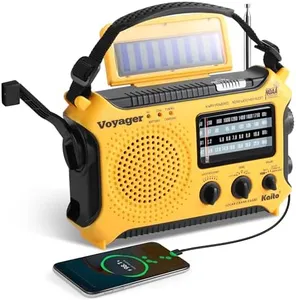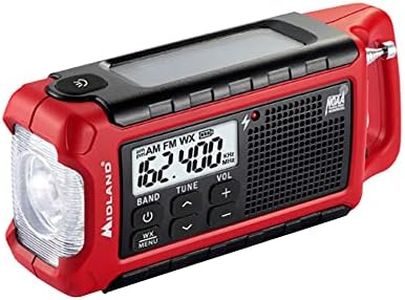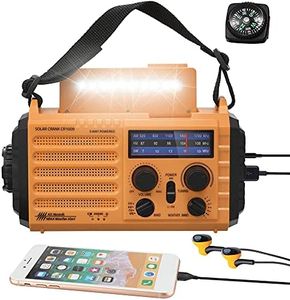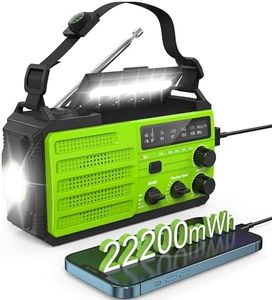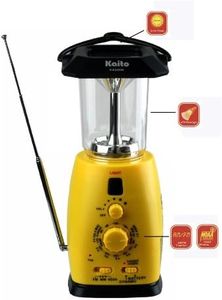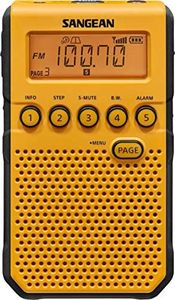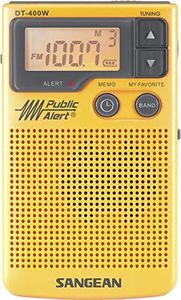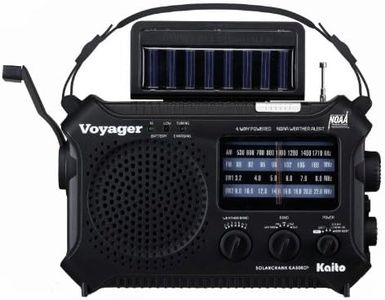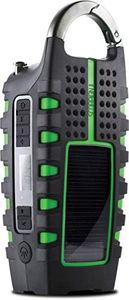We Use CookiesWe use cookies to enhance the security, performance,
functionality and for analytical and promotional activities. By continuing to browse this site you
are agreeing to our privacy policy
10 Best Noaa Weather Alert Radios
From leading brands and best sellers available on the web.Buying Guide for the Best Noaa Weather Alert Radios
Choosing a NOAA weather alert radio is a smart way to stay prepared for unpredictable weather and emergencies. These radios receive alerts and warnings directly from the National Oceanic and Atmospheric Administration, giving you timely and trustworthy information. When shopping for a weather alert radio, it's important to think about where and how you’ll use it—at home, work, or on the go. Understanding the features and considering your personal environment will help you pick a radio that keeps you informed and safe.SAME (Specific Area Message Encoding)SAME technology allows a weather radio to filter alerts so that you only receive warnings that are relevant to your specific geographic area, like your county or city. This is important because it prevents you from being woken up or interrupted by alerts that don't affect you. Radios may offer no SAME, basic SAME covering wider areas, or programmable SAME for multiple locations. If you want the most targeted alerts, choose a model where you can program your exact area; this is especially useful if you travel or have family in other counties.
Power OptionsNOAA weather radios can run on different power sources: batteries, plug-in, solar, or hand-crank. This determines how reliable your radio will be during a power outage or when you're away from home. Plug-in models are best for stationary home use, while radios with batteries, solar panels, or a crank are ideal for travel and emergencies when electricity might be unavailable. Consider your main use—at home or outdoors—and select a radio with the type of power options you'll trust in an emergency.
Alert Types and Notification ModesWeather radios use sound, lights, or vibration to grab your attention when an alert comes in. Some simply beep, while others have loud sirens and flashing lights, which are critical for heavy sleepers or people with hearing difficulties. Think about where you’ll keep your radio and whether you need a very loud or visible alert. Some models offer customizable levels, so you can choose a setting that matches your environment and needs.
Portability and SizePortability refers to how easy it is to carry and use your weather radio in different places. Compact, lightweight radios are great for hiking or travel, while larger units are more suited to stationary settings like your home or office. If you’re mainly using the radio while on the move, look for a small, durable design. For home or long-term shelter situations, a larger, more stable unit could be the better choice.
Reception and Antenna QualityThe reception quality determines how clearly your radio picks up NOAA signals, which can vary by your location and the environment. Radios with telescoping or extendable antennas generally get better signal strength. If you live in a rural or mountainous area with weaker signals, prioritize a model with a strong antenna or external antenna port. In urban areas, built-in antennas often work fine.
Additional FeaturesMany weather radios come with bonus features like AM/FM radio, phone charging ports, built-in flashlights, or clocks. While these aren’t essential for weather alerts, they can be very useful during a power outage or when camping. Consider which extra functions match your lifestyle: for example, a flashlight is helpful for emergencies at night, while USB charging can help keep your phone powered when the lights go out.

